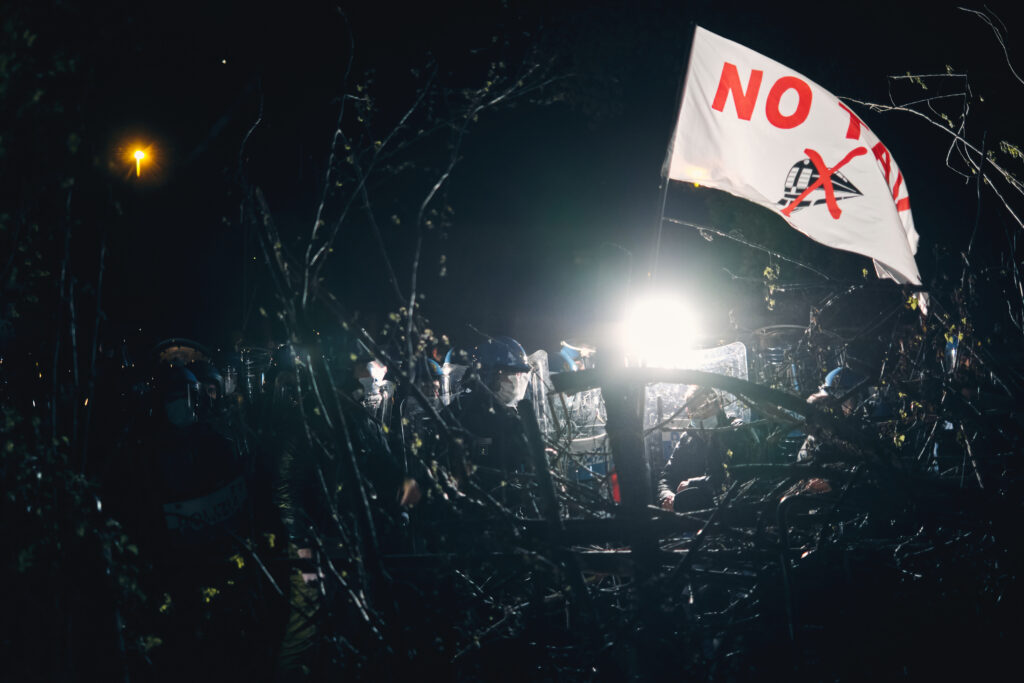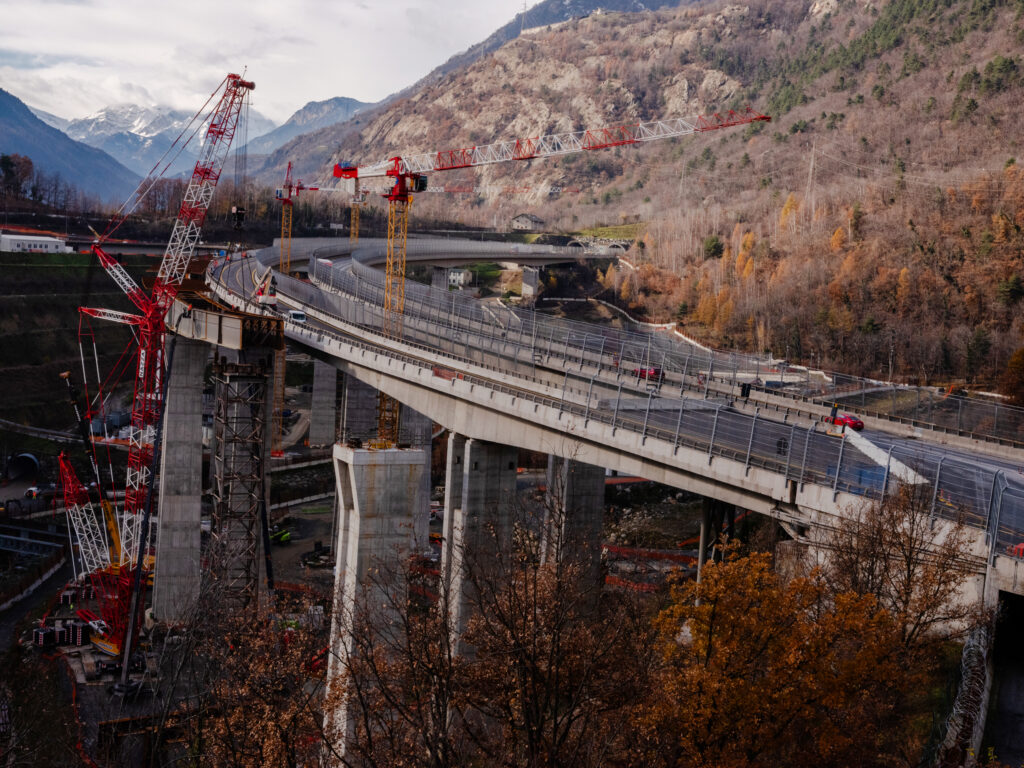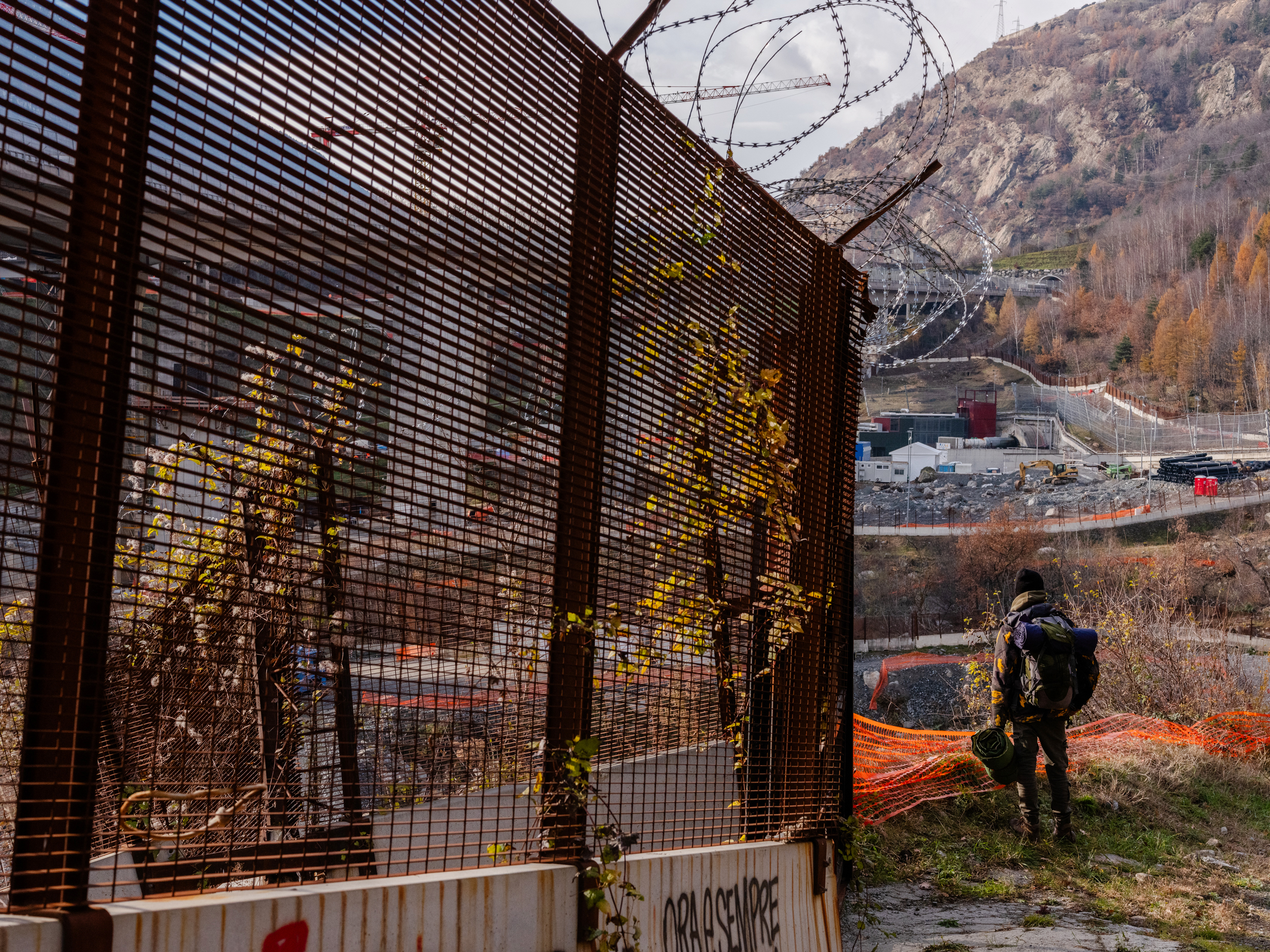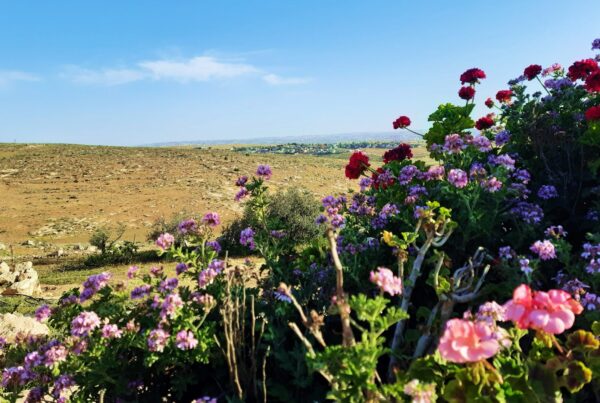This is the first contribution of a series of posts authored by active participants in the struggle against the the New Turin-Lyon Line (NLTL). As the story of the No TAV movement enters its fourth decade, we feel that the stakes are as high as they have ever been. Certainly high enough for us to share as much information as we can.
In the early 1990s, the European Commission presented its ambitious plans to redraw Europe’s transport infrastructures, unveiling a crisscrossing network of corridors that, thirty years on, remains substantially unchanged, although for the most part still unfinished.
Of all these new transport links, there is one in particular, the New Turin-Lyon Line (NLTL), that has become so divisive as to become one of the most contested megaprojects in contemporary European history.
While governments and the EU still consider the NLTL a key “missing link” in the continent’s transport infrastructure, activists in the No TAV (No to High Speed Rail) movement in Valsusa (Italy) and the neighboring Maurienne valley (France) argue that the project is nothing short of a complete sell-out of the local territory. A project based on systematic misdirection and disinformation, with permanent and irreversible consequences on Alpine ecologies and local communities alike.
The most contentious aspect of the project is a so-called base tunnel, composed of two shafts, each measuring over 57 km, which will cut directly beneath the mountains of the Ambin Massif, on the border between Italy and France.
For Telt, the company in charge of delivering the NLTL, the project is essential to modernize one of Europe’s central axes and, as they put it, “convert the mountain line into a lowland railway”. Critics in Italy and France dispute these claims, and have called instead for investments to improve the existing infrastructure.
On top of this, the fantasy of doing away with the mountains altogether is fundamentally at odds with the actual reality of the Alps, especially with regards to consequences for the water reserves that are currently locked away deep beneath the mountains.
Campaigners estimate that the amount of water set to be lost as a result of NLTL tunnelling works could be compared to the water needs of a population of between 300,000 and600,000 people, and the damage is already beginning to make itself felt, both in Italy and in France.
***
These days, the landscapes of Valsusa are etched with the marks of a simmering conflict. Driving out from the city of Turin towards Valsusa and the French border, the first signs of the conflict are immediately apparent, with the words “TAV = MAFIE” spelled out in large capital letters on the slopes of Mount Musiné, the first mountain to tower above the valley floor.
For years, motorists and passers-by had been used to spotting the wall piece from afar, until, in early 2025, it suddenly disappeared. It just so happens that some of the companies involved in the construction of the NLTL (Co.Ge.Fa., to name one of the more prominent firms) have been recently found to be closely associated with local ‘ndrangheta clans (an Italian mafia organization originally from Calabria), so it’s possible that someone may have felt uncomfortable to have the association so blatantly spelled out for the world to see. Nevertheless, it only took a couple weeks for local No TAV activists to climb back on the mountain and restore the mural.
In the grand scheme of things, this was just a minor skirmish, albeit one heavily charged with symbolic importance. Moving further into the valley, towards the worksites where Telt has been at work, things get a little more real.
On the outskirts of the small town of San Didero, hostile barriers made of heavy metal, topped with rolls of razor-sharp concertina wire, keep out unwanted intruders. This is one of the most recent hotspots of the conflict, a worksite that was opened in 2021 following a night-time raid by police, and that has since become a heavily fortified garrison where at least half a dozen police vehicles – including riot vans and one or two water cannons – can be spotted at all times of day and night.

Night-time police raid in San Didero, April 12, 2021. Credit: Marco Allasio.
On the opposite side of the road, a large wooden canopy with tarpaulin sheets for walls lies empty yet still furnished, enclosed behind a ring of red tape. Up until the courts confiscated the space in the autumn of 2023, this had been one of the No TAV movement’s main gathering spots, known in Italian as a presidio.
In 2022, the presidio had been named after American Indian Movement activist Leonard Peltier, whose lifelong struggle for indigenous rights and for the right to ancestral land struck a chord among many Valsusan activists. These days, a large, khaki military tent set up in an adjacent parking lot serves as a temporary replacement for the fenced-off presidio, providing shelter during shared meals and meetings.
Further up the valley, the streetlamps of Bussoleno are decorated with the insignia of the No TAV movement: white flags, with a crossed-out train and the words NO TAV spelled in red capital letters, blowing along roadsides and at roundabouts.
Above the awning of an osteria in Bussoleno’s old town, a No TAV flag blows alongside a Palestinian flag and a Che Guevara flag. Bussoleno was once a thriving railway hub, and many in the older generation of No TAV activists happened to be former railway workers. They came to the No TAV struggle often with little political experience but with a lifetime’s worth of insights into the inner workings of the rail sector. Alongside many other forms of experience and expertise, these knowledges gave substance and grounding to the movement’s opposition to the NLTL.
Today, the town is run by a right-wing administration, but its history is staunchly to the left. As it is the case across the valley, many of Bussoleno’s streets are named after deceased anti-fascist partigiani, young men who were barely adults when, towards the end of World War II, they sought shelter in the mountains and were killed for fighting against the occupying German forces. Memory of the resistance is still cherished to this day, and lives on with pride in the No TAV movement.
Susa, the unofficial capital of the valley, is a mere stone’s throw away from Bussoleno, and yet the difference between the towns is night and day. Where Bussoleno is historically working-class with a radical edge, Susa is historically middle-class and moderate. Despite the presence of another larger-than-life mountainside piece just outside the city – this one simply stating NO TAV in large white letters – the movement has struggled to bring the issue to the forefront of the town’s priorities.
But things in Susa are changing fast: between the 6th and 7th of October 2024, a field that hosted the local No TAV presidio on the outskirts of Susa, in the village of San Giuliano, was taken over by riot police during a night-time raid, in spite of activists’ efforts to resist the eviction.
This was the opening salvo in what is set to be a grim chapter for Susa. Indeed, if there is any place in the valley that will bear the full brunt of upcoming works, it is precisely Susa: tunnelling works for the base tunnel mean that the plains just outside the town are set to be taken over by a gigantic worksite, which will cut the valley in two, and which is set to last for at least a decade.
While the town has been promised a new international railway station (with no discernible timeline or budget), what is becoming increasingly clear is that a large portion of the area to be taken over by TELT will be turned into a landfill where the rubble that is extracted from the mountains will be stored and processed.
Meanwhile, virtually all the existing infrastructure for the town is set to be interrupted, rearranged, rebuilt and diverted to make way for the NLTL’s axis. It is hard to imagine a worse deal for the citizens of Susa, and yet with works still relatively distant on the horizon, it has also been difficult for local activists to convey how impactful these works will actually be.

A view of the NLTL worksite at La Maddalena, December 2024. Credit: Mario Popham.
If one wants to get a clear sense of what lies in store for Susa and other parts of the valley that are included in project plans, one must take a half-hour walk from Giaglione – a village just uphill from Susa – into Val Clarea, where the TELT worksite at La Maddalena has turned a once-verdant and wild place into a dustbowl.
The worksite was opened in 2011 despite the No TAV movement’s best efforts to keep developers out. Activists had set up a protest camp called the Free Republic of La Maddalena, which carried on for six weeks until they were forced out under an endless barrage of CS “tear” gas, turning the woodlands into what many have described as a war zone.
Since then, Val Clarea has been the stage for countless acts of protest, resistance and sabotage, as well as the place where one went to simply bear witness to the unfolding catastrophe. Over the years, the worksite grew like a cancer, devouring the secular woodlands and coming within an inch of the abandoned huts that once belonged to the farmers who lived there decades ago.
In 2020, some of these huts were turned into a presidio, lovingly restored by builders and craftspeople in the movement, until they too were confiscated by the courts in 2023. And yet, despite the state’s dogged determination to keep the movement away, people still make the walk to Val Clarea every other Sunday, to spend the day together and continue to claim their rightful presence outside the fences.
This is part of a series of posts written by active participants in the struggle against the NLTL. As the story of the No TAV movement enters its fourth decade, we feel that the stakes are as high as they have ever been. Certainly high enough for us to share as much information as we can.
For more on the history of the No TAV movement read this review of Mauvaise Troupe Collective’s The Zad and No TAV: Territorial Struggles and the Making of a new Political Intelligence.
Image on top: Heavy metal fence in Val Clarea, at the edge of the NLTL worksite at La Maddalena. Credit: Mario Popham





